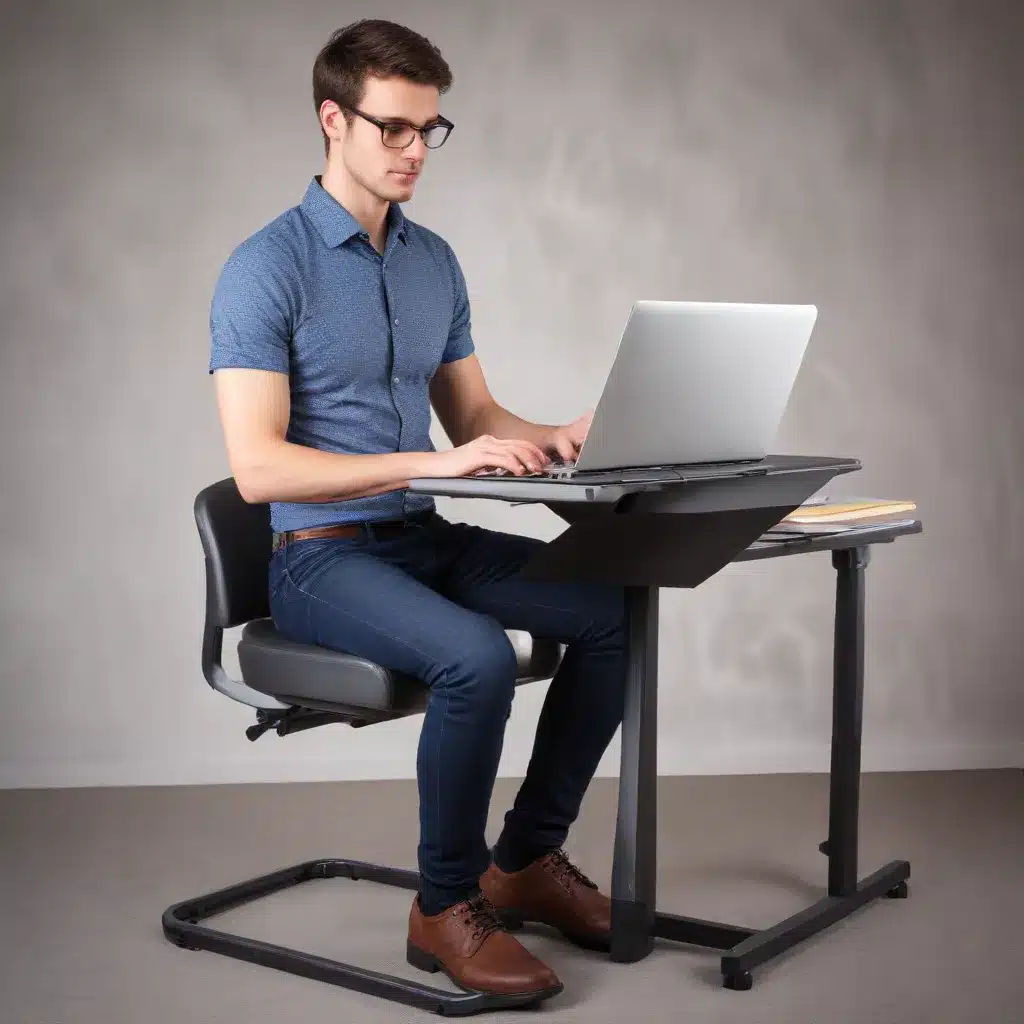
Understanding the Ergonomic Challenges of Laptops
Laptops have become ubiquitous in today’s digital landscape, offering unparalleled portability and convenience. However, the inherent design of these devices often poses significant ergonomic challenges that can lead to discomfort, pain, and even musculoskeletal disorders (MSDs) for prolonged users. Unlike desktop computers, where the monitor and keyboard can be positioned independently, laptops combine these essential components into a single, fixed unit. This integration creates a fundamental conflict, forcing users to compromise between optimal neck/head posture and ideal hand/wrist positioning.
The fixed nature of laptop design, along with the limited adjustability of their components, can lead to a range of ergonomic issues. Users often find themselves hunching over the device, straining their necks to view the screen or stretching their fingers to reach the keyboard. These poor postures can contribute to neck, shoulder, and upper back pain, as well as discomfort in the wrists and hands. Over time, these ergonomic stressors can even progress into more serious MSDs, such as carpal tunnel syndrome or tendinitis.
Addressing the Ergonomic Needs of Laptop Users
To mitigate the ergonomic risks associated with prolonged laptop use, it is essential to adopt a holistic approach that considers the user’s overall workstation setup and incorporates targeted interventions. One of the most effective solutions is the use of an adjustable laptop stand or riser, which can help alleviate many of the postural challenges faced by laptop users.
The Benefits of an Adjustable Laptop Stand
An ergonomically designed laptop stand offers several key advantages:
-
Improved Neck and Head Posture: By elevating the laptop screen to a more optimal viewing height, the stand encourages a neutral neck and head position, reducing strain on the upper body.
-
Better Wrist and Hand Alignment: Raising the laptop allows users to maintain a more natural, straight-wrist position while typing, minimizing the risk of repetitive stress injuries.
-
Enhanced Comfort and Productivity: Improved posture and reduced discomfort can lead to increased user comfort and productivity, as individuals are better able to focus on their tasks without the distraction of physical pain or fatigue.
-
Adaptability to User Needs: Adjustable stands provide the flexibility to accommodate users of different heights and preferences, enabling a more personalized and ergonomic workstation setup.
Considerations for Choosing the Right Laptop Stand
When selecting an adjustable laptop stand, it is important to consider several key factors:
-
Height Adjustability: The stand should allow for a wide range of height adjustments to accommodate users of various statures and enable the optimal positioning of the laptop screen.
-
Tilt and Angle Adjustment: The ability to tilt and angle the laptop screen can help reduce glare and ensure a comfortable viewing angle.
-
Stability and Durability: The stand should be sturdy enough to securely hold the laptop, even during periods of intensive use, without compromising stability.
-
Portability and Footprint: For users who frequently work in different locations, a lightweight and compact stand can enhance the overall mobility and convenience of the setup.
-
Cooling and Airflow: Some stands incorporate features like built-in fans or vents to help dissipate heat, improving the laptop’s performance and longevity.
By carefully evaluating these design elements and selecting an adjustable laptop stand that aligns with their specific needs, users can significantly improve their overall comfort, posture, and productivity while working with their laptops.
Ergonomic Strategies for Laptop Users
In addition to using an adjustable laptop stand, there are several other ergonomic strategies that laptop users can implement to enhance their overall well-being and work experience:
1. Proper Desk and Chair Setup
Ensure that your desk and chair are properly adjusted to support a neutral, upright posture. This may involve raising or lowering the desk, adjusting the chair height, and using a footrest to maintain a 90-degree angle at the hips and knees.
2. Alternate Between Sitting and Standing
Prolonged sitting can have negative health consequences, so it’s important to vary your working position throughout the day. Incorporate standing or walking breaks to reduce the strain on your body and improve circulation.
3. Maintain Good Typing Technique
Avoid excessive force or tension when typing, keeping your wrists straight and your fingers relaxed. Use a light touch on the keyboard and consider the use of an external, ergonomic keyboard if necessary.
4. Take Regular Breaks and Stretch
Set reminders to take periodic breaks, even if just for a few minutes. Use this time to stretch your neck, shoulders, and arms to counteract the effects of prolonged laptop use.
5. Adjust Screen Brightness and Positioning
Position the laptop screen to minimize glare and eye strain, and adjust the brightness and contrast settings to a comfortable level. Ensure that the top of the screen is at or slightly below eye level.
6. Utilize External Input Devices
Consider using an external mouse or trackpad to reduce the strain on your wrists and hands, especially during extended periods of use.
By implementing these ergonomic strategies in conjunction with the use of an adjustable laptop stand, laptop users can significantly enhance their overall comfort, productivity, and long-term health.
Conclusion
Laptops have revolutionized the way we work, study, and communicate, but their inherent design can also pose significant ergonomic challenges. By understanding the importance of proper posture, utilizing an adjustable laptop stand, and incorporating other ergonomic best practices, users can mitigate the risks of MSDs and maintain their well-being while enjoying the benefits of these portable devices. As technology continues to evolve, it is crucial for laptop users to prioritize their ergonomic needs and adopt solutions that promote comfort, productivity, and long-term health.
Remember, your comfort and safety should be a top priority when using a laptop. By taking the time to optimize your workstation and adopt ergonomic habits, you can ensure a more positive and sustainable computing experience.












